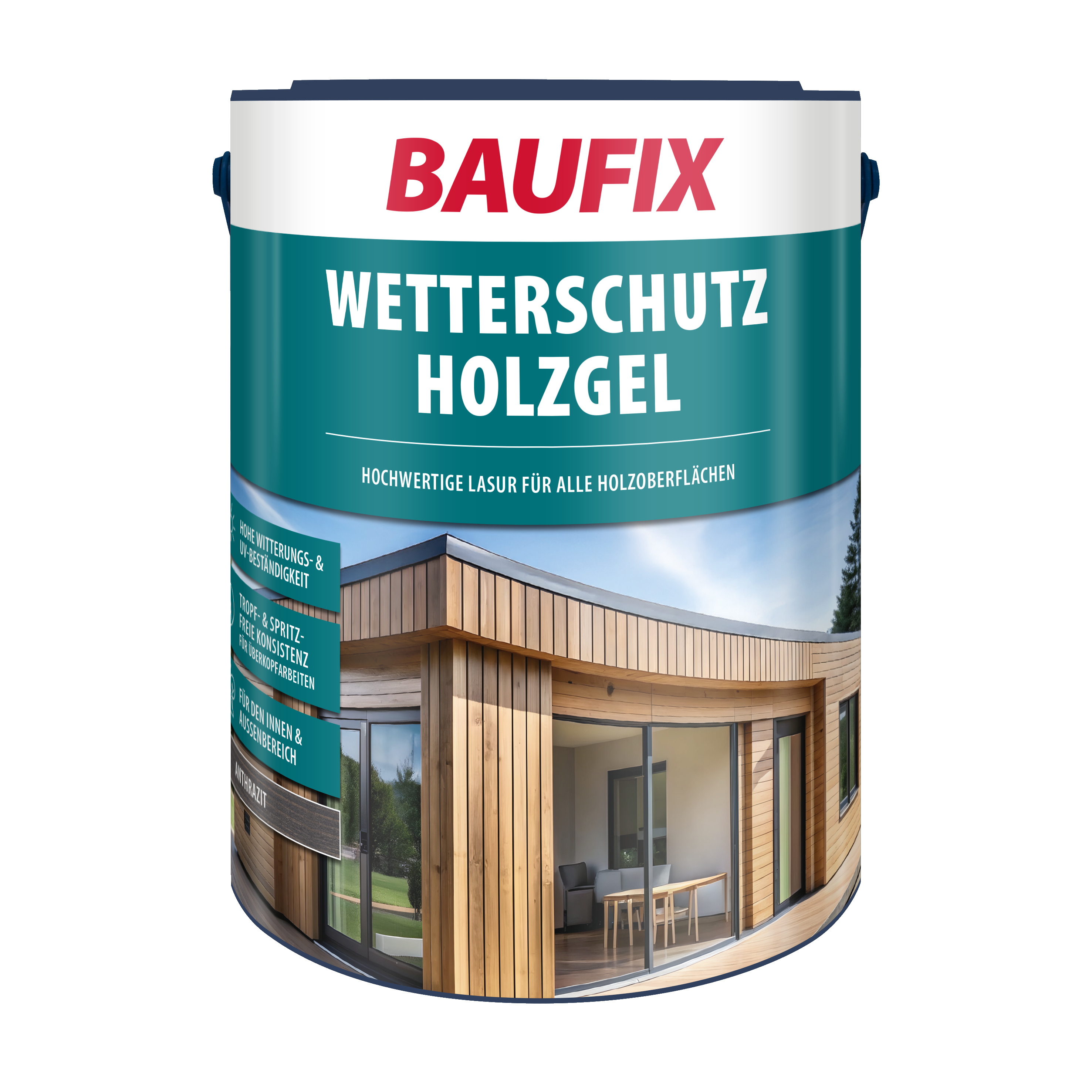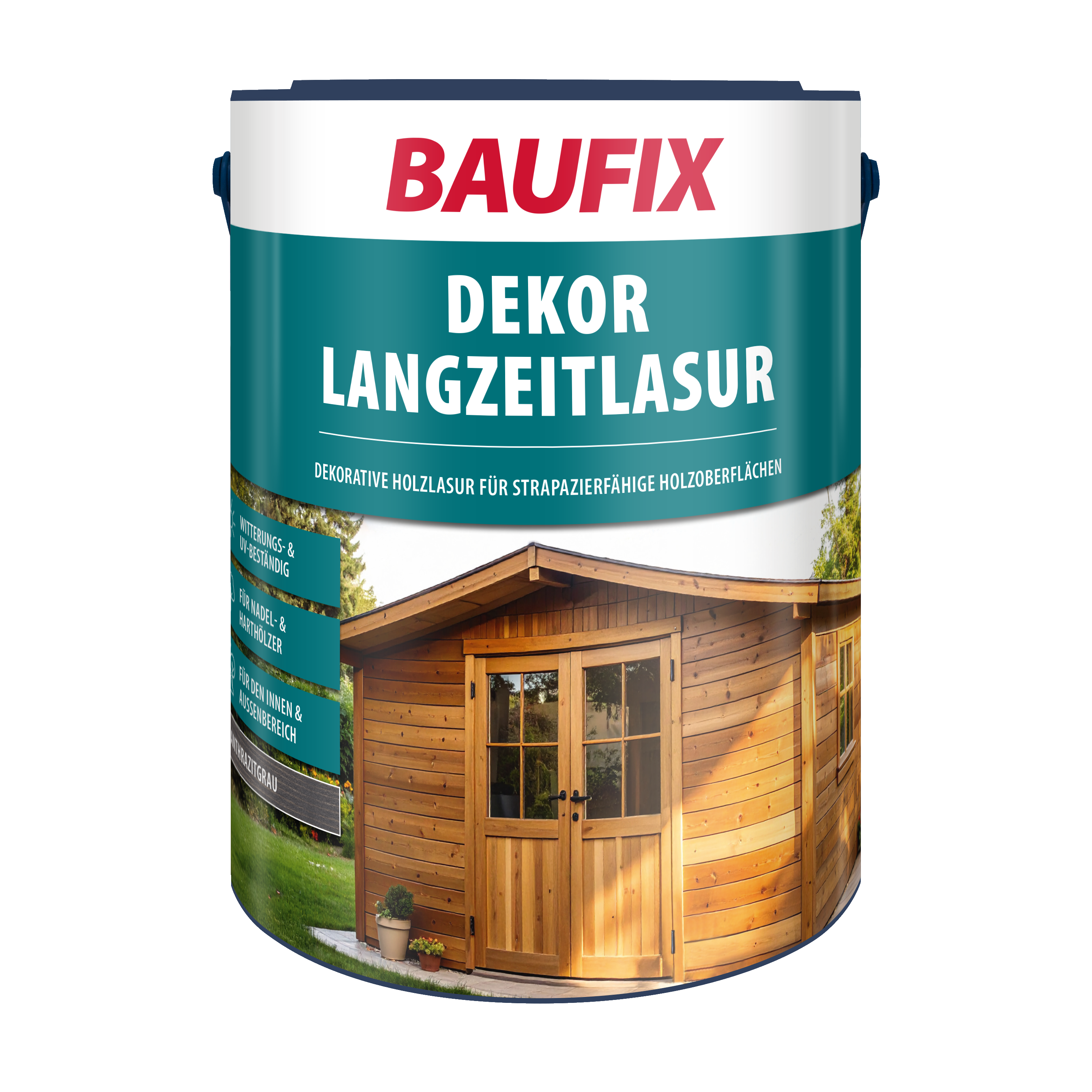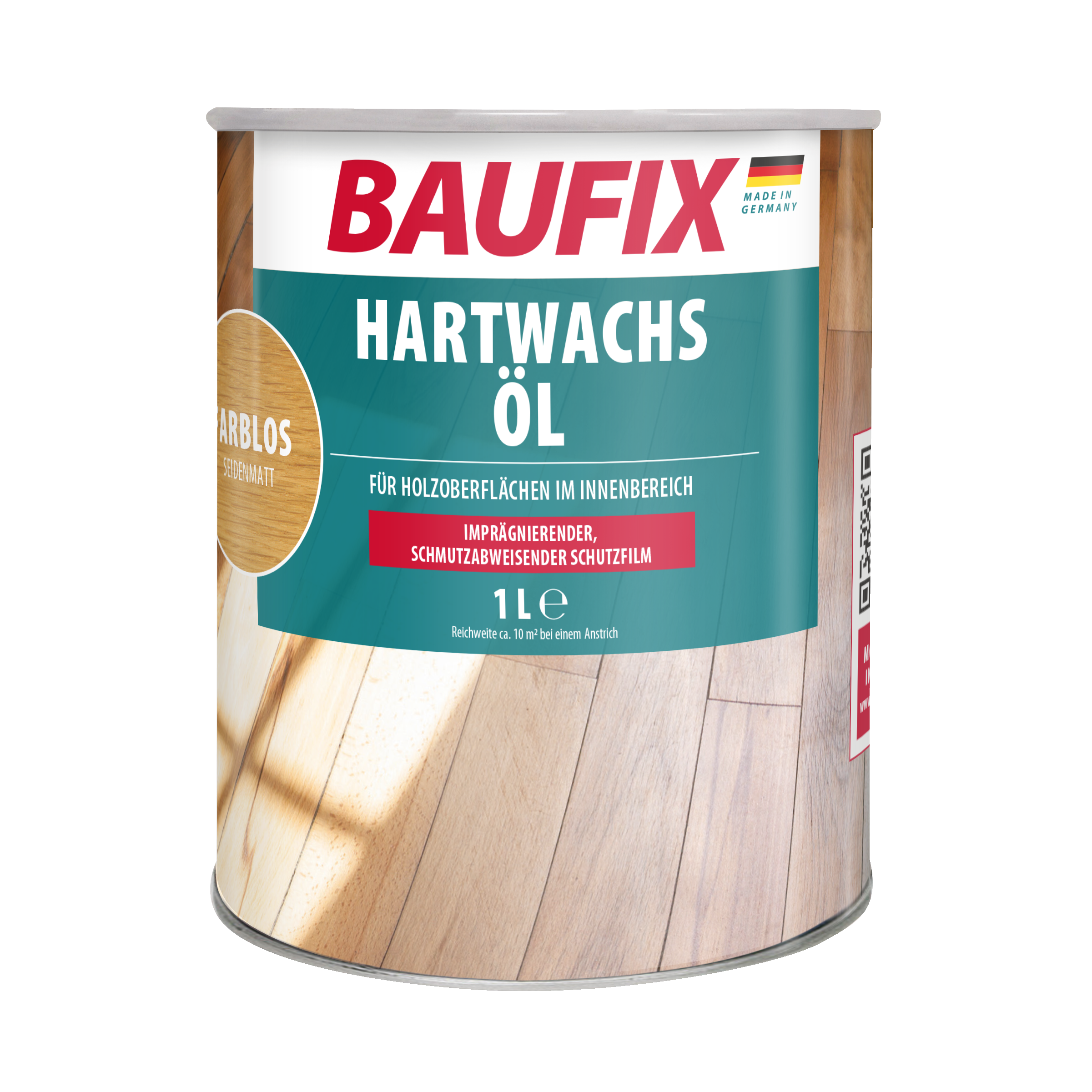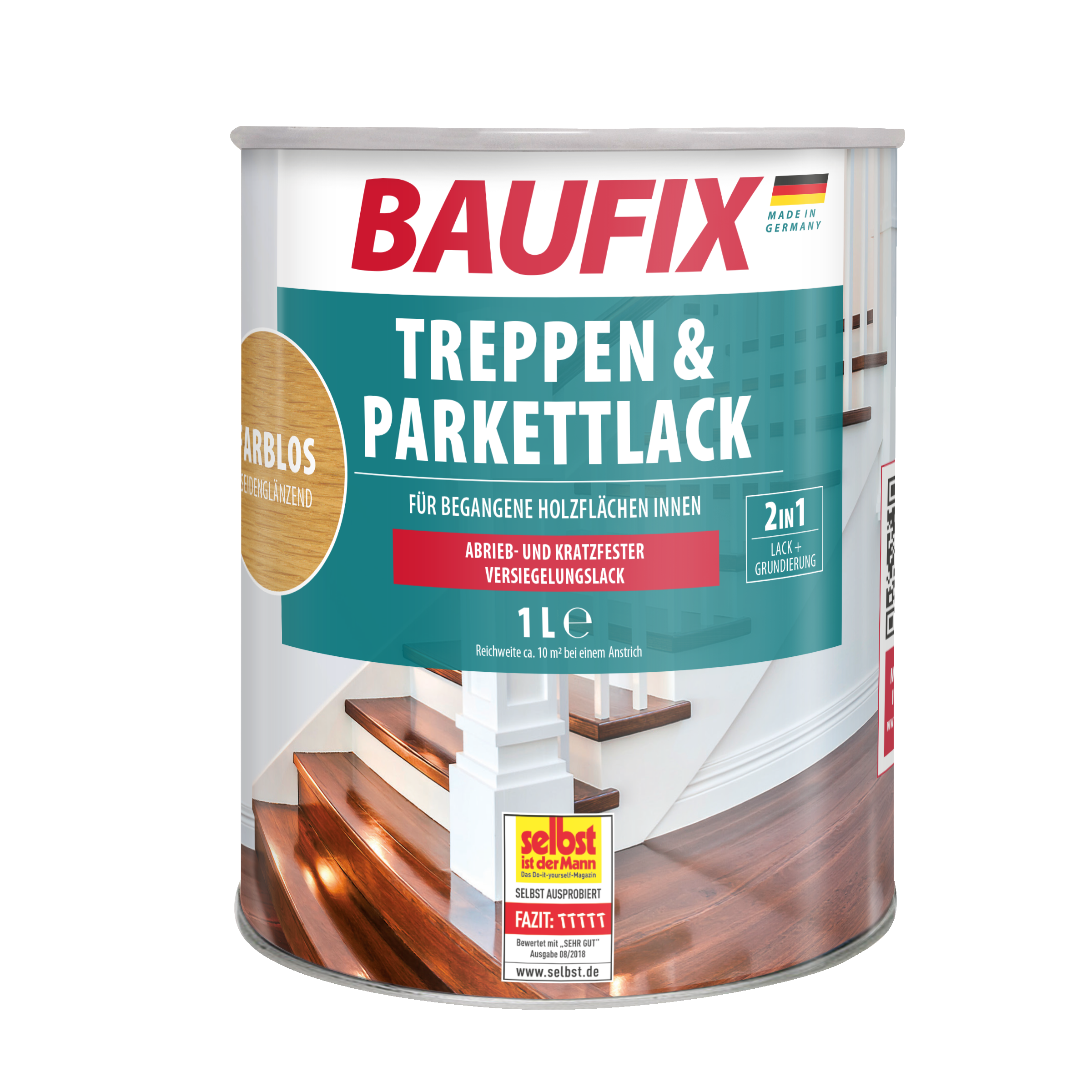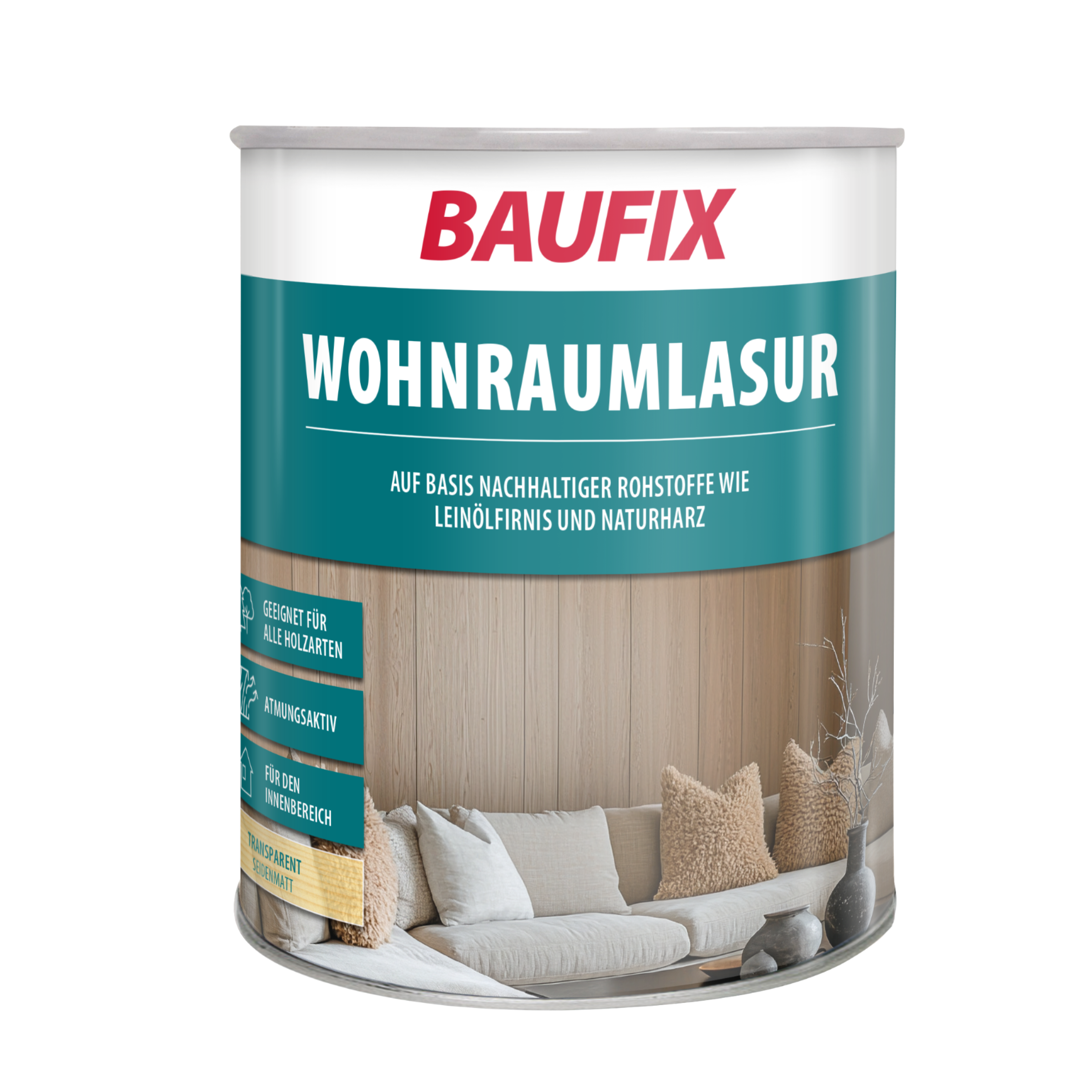Wood preservative | Protection for inside & outside
Contents
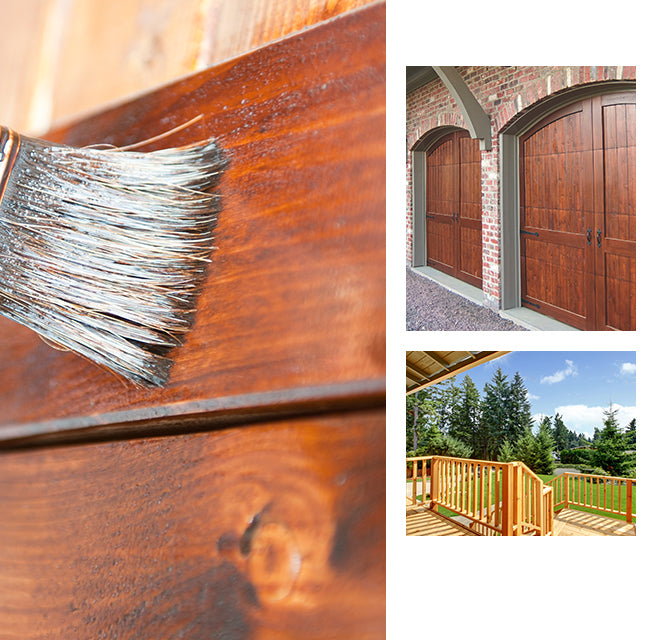
subheading
Wood Preservative Stain: Use, Differences & More
Wood is one of the most popular building materials. No wonder, its natural beauty is visually impressive and the possible uses are varied. Untreated wood, especially outdoors, is exposed to the weather every day. Sun, rain, but also pests and insect infestations make life difficult for the material. Even indoors, wooden surfaces need special wood protection and regular care. This is the only way to ensure that outdoor furniture, chests of drawers, etc. look their best for a long time. Glazes for wood protection such as wood preservative glazes, wood oils and wood preservative paints for paint act as a protective layer. Weather, insects and fungi no longer stand a chance, at the same time the breathability is maintained and the natural grain is revealed.
Here we give you processing tips and explain how to protect your wood with wood stains and which products are suitable when.
subheading
What is wood preservative and what do I use it for?
A wood preservative is a product that protects wood both indoors and outdoors. Outdoors, it protects against weather, UV rays, fungi and wood-destroying insects. Indoors, it protects furniture from everyday use and emphasizes the natural grain. Unlike varnish, it does not cover the surface, but preserves the natural appearance of the wood and allows it to breathe by keeping the pores open.
subheading
Types of glazes: thin and thick layer glazes
thin-layer glazes
Thin-layer glazes have a liquid consistency. They are open-pored and colorless. Because the wood protection glaze has similar properties to water, it can penetrate deep into the wood.
Advantages:
- Renewable at any time.
- Smooth and silky-gloss coating brings out the grain
- No peeling.
- Good weather protection for wooden facades.
- Low content of binding agents.
Disadvantages:
- Difficult to handle due to liquid consistency.
- High solvent content.
- The material can also absorb moisture from rain and contact with the ground, which can lead to weathering if not properly cared for.
thick-layer glazes
Glazes that form a thick layer have a tough consistency, similar to varnish. Due to the high content of binding agents, they form a solid protective layer.
Advantages
- Easier processing.
- Optimal protection through enveloping surface.
- Smooth, satin finish that highlights the grain.
- Suitable for indoor hardwoods.
Disadvantages:
- Tends to flake over time.
- Renewal requires sanding off the old paint.
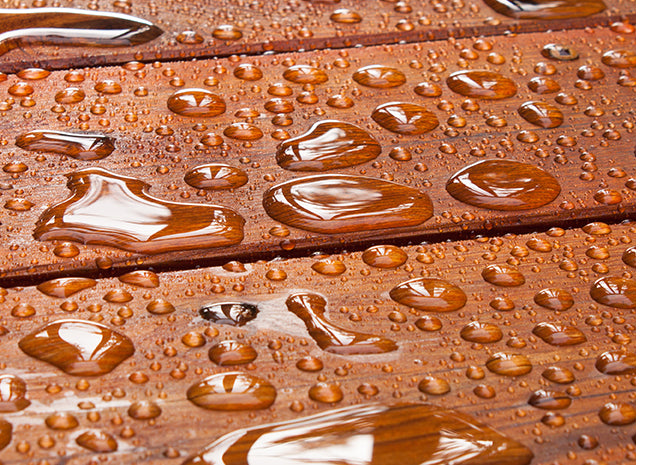
subheading
Various application areas: indoor & outdoor
subheading
wood preservative glaze inside
Wood protection glazes for indoor and outdoor use have different properties and requirements. Wood glazes for indoor use do not contain solvents and are free of harmful substances, but are usually not weatherproof. They protect against moisture and dust, highlight the natural grain and care for the wood. These coatings are often used in different glaze colors and are used on doors, furniture, wooden ceilings, windows and floors to prevent swelling.
wood preservative glaze outside
An exterior wood preservative must be weatherproof and not just provide care, but primarily protection. Solvent-based paints protect furniture and similar outdoor objects from moisture, sunlight, mold, rot, weathering, fungi and insect infestation. These outdoor wood glazes make the material resistant to weather conditions and graying, contain fungicides and biocides and are therefore not suitable for indoor use, but only for outdoor use.
subheading
Briefly explained: dimensionally stable and non-dimensionally stable components
When it comes to the types of wood stains, there is always talk of dimensionally stable and non-dimensionally stable components. This information can often be found on the products or in the item descriptions, as is the case with BAUFIX wood protection stains and wood care products.
Dimensionally stable wooden components such as windows and doors retain their dimensions despite temperature fluctuations and high humidity. Thin-layer wood glazes are ideal for these wooden components because they are open-pored and penetrate deeply. Non-dimensionally stable wooden components such as wooden facades and fences change their dimensions as they move. Thick-layer glazes that form a protective layer are suitable here. Components with limited dimension stability such as wooden houses and shutters can change to a certain extent. Thin to medium-layer wood glazes are suitable for them.
subheading
Applying wood preservative: step-by-step instructions
1. Preparation
If you want to varnish wood outdoors, the outside temperature should be above 5 degrees Celsius. At lower temperatures, the pores of the wood are narrower and the absorbency is limited. First remove dust and dirt from the wooden surface. Use a sander, sandpaper or a wire brush to pre-treat it to remove old paint. Old paint residues can remain if they are solid and stable. Any resin that comes out can be removed with universal thinner.
2. Brush selection
Choose a solvent-resistant brush for solvent-based wood stains. If you are working with a water-based product, use a water-based paint brush.
3. Primer / Impregnation
For a smooth and flawless result, we recommend a wood protection primer, for example the BAUFIX wood protection primer for hardwoods and softwoods.
subheading
4. First coat
Stir the wood preservative thoroughly with a stirring stick to achieve an even consistency. Then apply the glaze evenly in the direction of the wood grain.
5th dry season
Allow the first coat to dry according to the manufacturer's instructions on the label. This usually takes several hours to overnight.
6. Second coat
Apply a second coat of wood preservative to increase protection and color depth. Allow this coat to dry completely.
subheading
Does the wood need to be primed beforehand?
The general rule is: outdoors, where wood is exposed to the weather and the wood protection glaze is being treated for the first time, it is advisable to apply a wood primer. This ensures that the material absorbs the glaze well and evenly. The primer also evens out any unevenness that could look unsightly without this preparatory work. A smooth surface is guaranteed. Otherwise, a primer is not necessary for most wood protection glazes, as is the case indoors.
subheading
How do you remove old wood stains?
It depends on whether it is a thin-layer wood protection glaze or a thick-layer wood protection glaze. Wood glazes that form a thin layer have penetrated deep into the wood after the coating and are therefore difficult to remove. With a thin layer, it is advisable to leave the old coating and simply apply a new primer.
Thick-layer wood glazes form water-repellent and opaque surfaces similar to varnishes and flake off over time. The old paint can therefore be easily sanded down with sandpaper, ground down, stained or removed with warm air. Once sanded and primed outdoors, the new coat can be applied with a brush. We advise against painting over it.
What should I pay attention to when buying wood preservatives?
Wood protection glazes, such as the BAUFIX decorative long-term glaze , are available in various colors, which are often reminiscent of types of wood such as mahogany, teak, pine or walnut. There are also white, gray and brown variants. Colorless glazes are particularly popular because they beautifully highlight the grain. The choice of color depends on personal taste.
Wood stains can be water-based or solvent-based. Solvent-based stains are suitable for outdoor use because they can evaporate. Because solvents often trigger allergies in enclosed spaces, they are not suitable for indoor use. Water-based wood preservatives are ideal for living spaces. A good way to protect wood in apartments and houses with a clear conscience is the natural living space stain from BAUFIX . The wood preservative stain is a natural wood stain based on sustainable raw materials such as linseed oil varnish and natural resin.
Thin-layer wood stains provide effective protection against moisture, dust and weather influences, while stains that form a thick layer offer better protection against extreme weather conditions and impacts. All wood stains protect against UV radiation and highlight the grain. Hard wax oils also provide impregnation.
The drying time varies depending on the manufacturer and product. A surface can be dust dry after just 30 minutes, while complete drying can take up to 12 hours. On average, the drying time is two to four hours. With the long-term decorative protection from BAUFIX, it is possible to paint again after 30 minutes.
You can remember: you need 100 milliliters of the undiluted wood preservative per square meter. For surfaces with large pores, add twice the amount. The product information often contains information on consumption. If you want to emphasize intense colors or the grain, it may be worth repeating the painting several times.
subheading
Are there alternatives to a wood preservative?
Wood oils for a natural wood look in the interior
Environmentally friendly wood oils such as BAUFIX wood care oil are particularly suitable for painting wooden floors, stairs, solid wood furniture, panels, strips and cork surfaces indoors. It is also advisable to use wood oil if you want to highlight the grain. For the care of special types of wood, we recommend BAUFIX teak care oil, among others. Wood oils are a good alternative for care, but do not offer sufficient protection against weather, moisture, insect infestation or rot.
Wood varnishes for strong protection
Weather-resistant wood varnishes offer strong protection as a protective coating. They seal the surface and prevent moisture, dirt and dust from penetrating. However, this also suppresses breathability and obscures the grain. The advantage: you don't have to repeat the new coat and the refresh every year. However, the old coat must always be completely removed. You can treat heavily used surfaces such as stairs with BAUFIX Stairs & Parquet Varnish .
Wood waxes for satin-gloss surfaces
Wood waxes such as BAUFIX hard wax oil are ideal partners for floors and furniture in interior spaces. These create a water-repellent and silky-gloss surface and also act as an impregnation. The surface thus remains breathable. Here, too, the natural grain is visible after treatment.
wood gels for weather protection
Wood protection gels such as BAUFIX weather protection wood gel are ideal for all surfaces, including window shutters. They are easy to apply as thick-layer protective coatings and are impressively quick to dry.
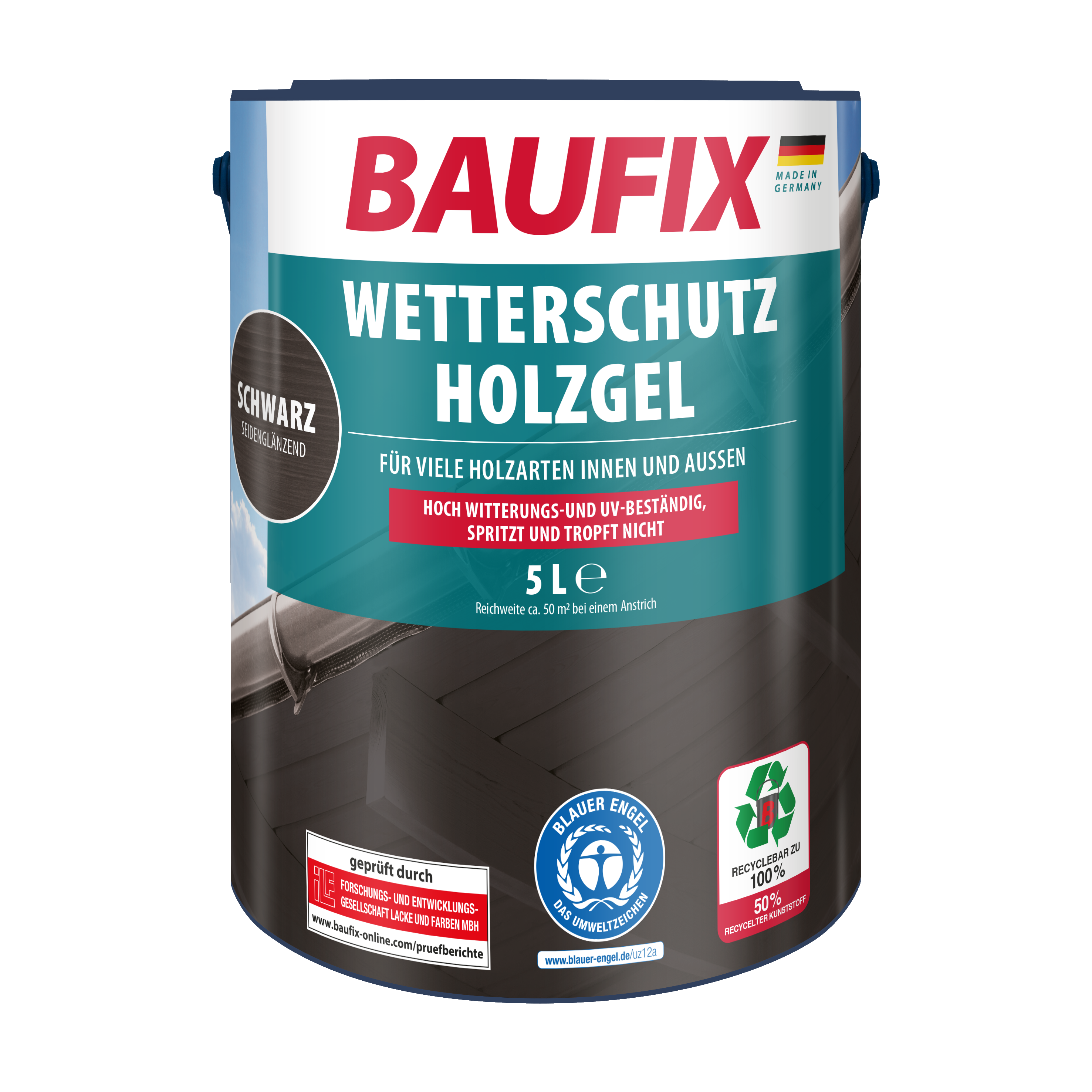
subheading
Our wood protection glaze: BAUFIX Weather Protection Wood Gel
- breathable, for all types of wood
- does not splash, does not drip
- weatherproof and UV-resistant
- for indoor & outdoor



